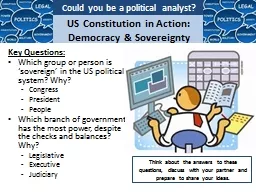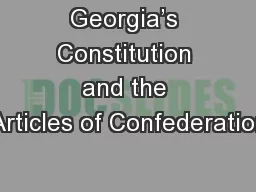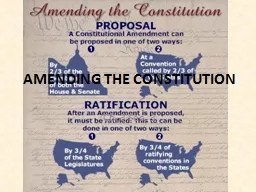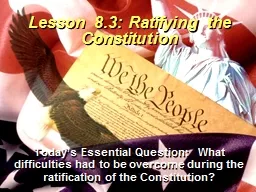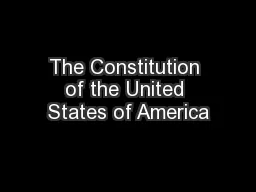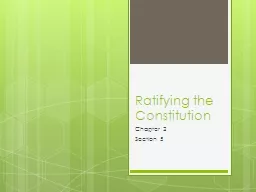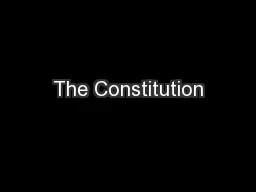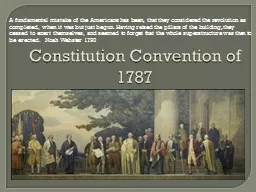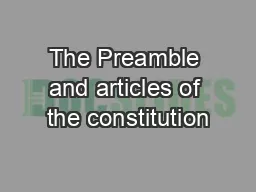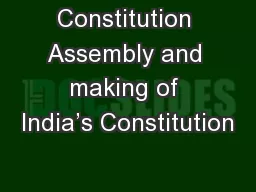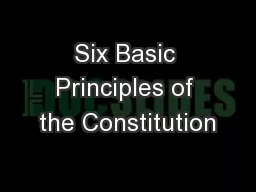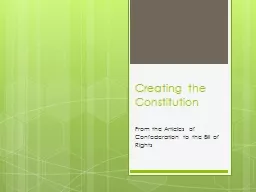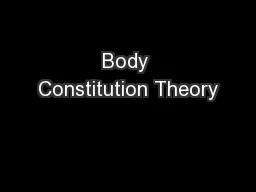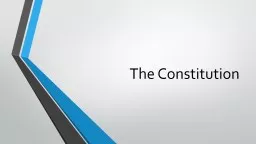PPT-US Constitution in Action:
Author : danika-pritchard | Published Date : 2018-02-20
Democracy amp Sovereignty Key Questions Which group or person is sovereign in the US political system Why Congress President People Which branch of government has
Presentation Embed Code
Download Presentation
Download Presentation The PPT/PDF document "US Constitution in Action:" is the property of its rightful owner. Permission is granted to download and print the materials on this website for personal, non-commercial use only, and to display it on your personal computer provided you do not modify the materials and that you retain all copyright notices contained in the materials. By downloading content from our website, you accept the terms of this agreement.
US Constitution in Action:: Transcript
Download Rules Of Document
"US Constitution in Action:"The content belongs to its owner. You may download and print it for personal use, without modification, and keep all copyright notices. By downloading, you agree to these terms.
Related Documents

